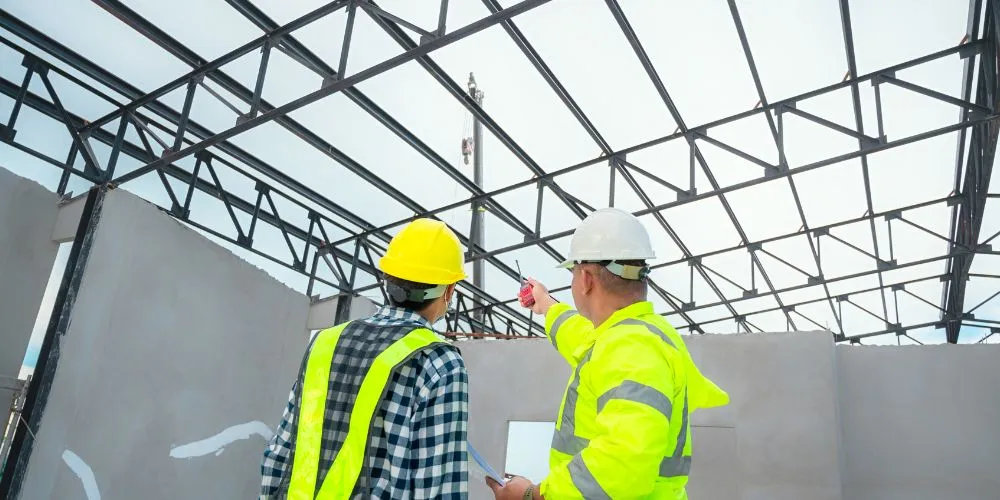Structural Engineering stands as the bedrock of the built environment, playing a pivotal role in shaping the physical landscape that surrounds us. This article delves into the multifaceted realm of Structural Engineering, exploring its fundamental principles, diverse applications, key advantages, notable methodologies, and the challenges it addresses within the dynamic field of construction and infrastructure development.
Unveiling Structural Engineering
Structural Engineering represents the branch of civil engineering dedicated to designing and ensuring the integrity of structures, ranging from structures and bridges to dams and towers. It encompasses a meticulous process of analysis, planning, and execution to ensure that constructed elements withstand various forces and environmental conditions.
Key Components of Structural Engineering
Understanding the key components of Structural Engineering is crucial for comprehending its comprehensive nature and impact:
- Structural Analysis: This involves evaluating the internal and external forces acting on a structure to ensure it can withstand loads and remain stable. Advanced software and mathematical models aid in this analysis.
- Material Selection: Structural engineers must choose appropriate construction materials, considering strength, durability, and environmental impact. It includes steel, concrete, wood, and innovative materials suited to specific applications.
- Construction Management: Overseeing the construction process is integral to Structural Engineering. It involves collaboration with architects, contractors, and other professionals to ensure designs are executed accurately and safely.
Applications of Structural Engineering
Structural Engineering finds applications across a spectrum of construction projects, influencing how buildings and infrastructure are designed, constructed, and maintained:
Building Design and Construction
The core application of Structural Engineering is in designing and constructing buildings. Structural engineers ensure that structures, from residential homes to skyscrapers, are safe, functional, and compliant with building codes.
Bridge Engineering
Structural engineers are crucial in designing bridges that withstand various loads and environmental conditions. It includes analyzing the bridge’s span, materials used, and the forces acting upon it.
Infrastructure Development
It contributes to developing critical infrastructure such as dams, tunnels, and airports. Engineers design structures that can withstand the unique challenges posed by each type of infrastructure.
Seismic Design
In regions prone to seismic activity, structural engineers specialize in seismic design. It involves creating structures that can absorb and dissipate seismic forces, ensuring earthquake safety.
Advantages of Structural Engineering
The adoption of Structural Engineering brings forth a multitude of advantages, contributing to the overall safety, durability, and functionality of constructed structures:
Safety and Stability
One of the primary advantages of Structural Engineering is the emphasis on safety and stability. By carefully analyzing and designing structures, engineers ensure that buildings and infrastructure can withstand various loads and environmental conditions.
Durability and Longevity
Structural Engineering focuses on selecting durable materials and designing structures with longevity in mind. It results in buildings and infrastructure that can withstand the test of time, decreasing maintenance costs and ensuring sustained functionality.
Cost-Effective Designs
It strives to create cost-effective designs without compromising safety. It involves optimizing material usage, considering construction methods, and minimizing the need for extensive maintenance over the structure’s lifespan.
Environmental Considerations
Modern Structural Engineering incorporates environmental considerations. Engineers explore sustainable materials, energy-efficient designs, and eco-friendly construction techniques to minimize the environmental impact of structures.
Methodologies of Structural Engineering
Structural Engineering employs various methodologies to ensure the design and construction of secure and efficient structures:
Finite Element Analysis (FEA)
FEA is a numerical method used in Structural Engineering to analyze complex structures by dividing them into smaller, more manageable elements. It allows engineers to simulate the behavior of structures under various conditions.
Computer-Aided Design (CAD)
It widely uses CAD software to create detailed and precise designs. It enables engineers to visualize structures in three dimensions, aiding in the planning and execution phases of projects.
Building Information Modeling (BIM)
BIM is an integrated approach that involves creating digital representations of structures’ physical and functional characteristics. Structural engineers utilize BIM for collaborative design, construction, and management of projects.
Challenges in Structural Engineering
While the advantages are evident, Structural Engineering faces its challenges. Addressing these challenges is important for ensuring the safety and integrity of constructed structures:
Aging Infrastructure
In many regions, existing infrastructure is aging, posing challenges for structural engineers. Rehabilitating and maintaining older structures requires innovative solutions to ensure continued safety and functionality.
Environmental Challenges
Structural engineers must contend with environmental challenges like climate change and extreme weather events. Designing structures to withstand these challenges requires adaptation and resilience in unpredictable conditions.
Technological Integration
While technology offers numerous benefits, integrating new technologies into traditional practices can be challenging. Structural engineers must continually adapt to software, materials, and advancements in construction methods.
Budget Constraints
Balancing safety, functionality, and cost-effectiveness can be challenging, especially when faced with budget constraints. Structural engineers must find innovative solutions to meet project requirements while staying within budgetary limitations.
Future Trends in Structural Engineering
As technology continues to evolve, future trends in Structural Engineering point toward advancements that further enhance its capabilities:
Smart Structures
Developing smart structures involves integrating sensors and monitoring systems into buildings and infrastructure. It enables real-time structural health monitoring, allowing for proactive maintenance and minimizing risks.
Advanced Materials
Structural engineers are exploring advanced materials such as carbon fiber, high-performance concrete, and nanomaterials. These materials offer enhanced strength, durability, and sustainability, pushing the boundaries of traditional construction.
Robotics and Automation
The use of robotics and automation in construction is on the rise. Structural engineers may leverage robotic technologies for tasks like on-site assembly, reducing labor-intensive processes and improving efficiency.
Sustainable Design Practices
Sustainable design practices are becoming integral to Structural Engineering. Engineers increasingly incorporate green building principles, renewable energy solutions, and environmentally friendly construction materials into their designs.
Conclusion
Structural Engineering is the cornerstone of the construction industry, ensuring the built environment’s safety, functionality, and durability. Its applications in building design, bridge engineering, infrastructure development, and seismic design profoundly impact how we inhabit and interact with our surroundings. While challenges persist, the advantages of Structural Engineering are evident in the safety and longevity of the structures that define our cities and landscapes.
Future trends, including smart structures, advanced materials, robotics, and sustainable design, indicate a dynamic and promising future, contributing to a more resilient, technologically advanced, and sustainable built environment. The responsibility to harness the full potential rests on the shoulders of engineers, researchers, and industry leaders, urging them to embrace innovation and adaptability for the continued advancement of the field.










